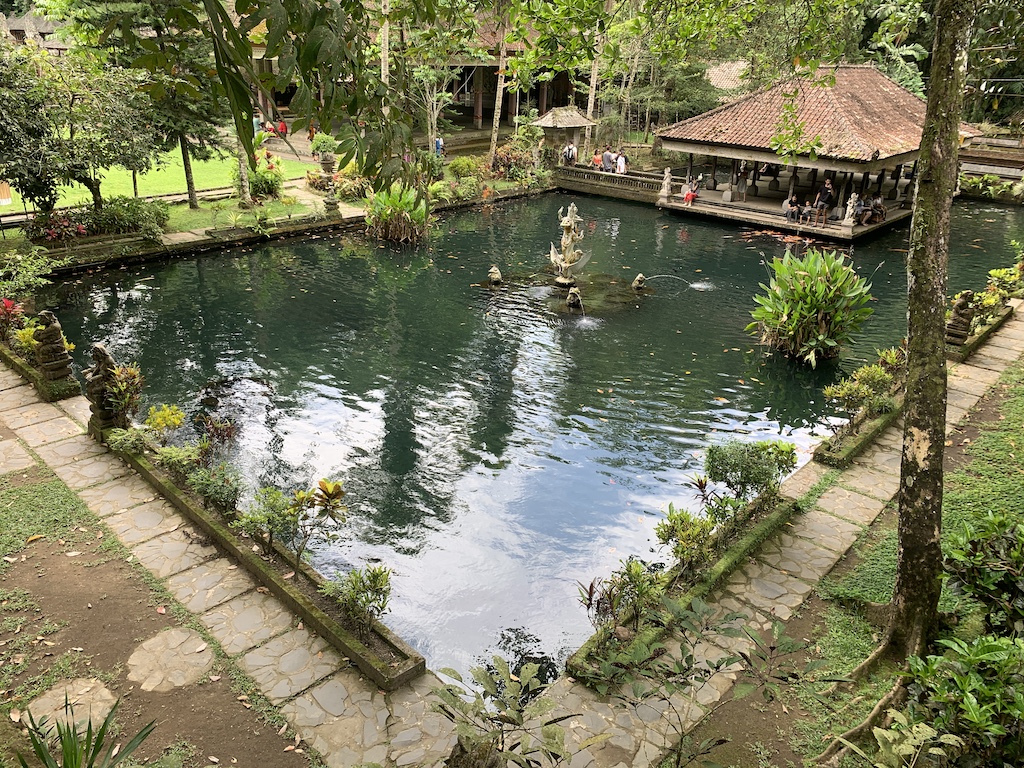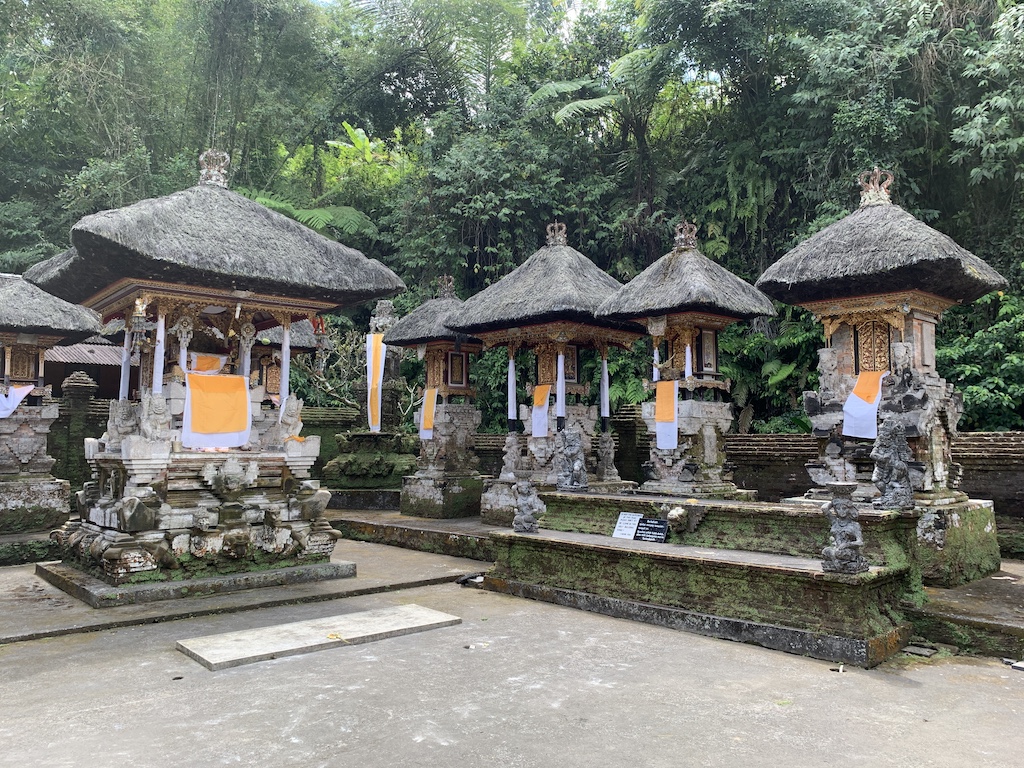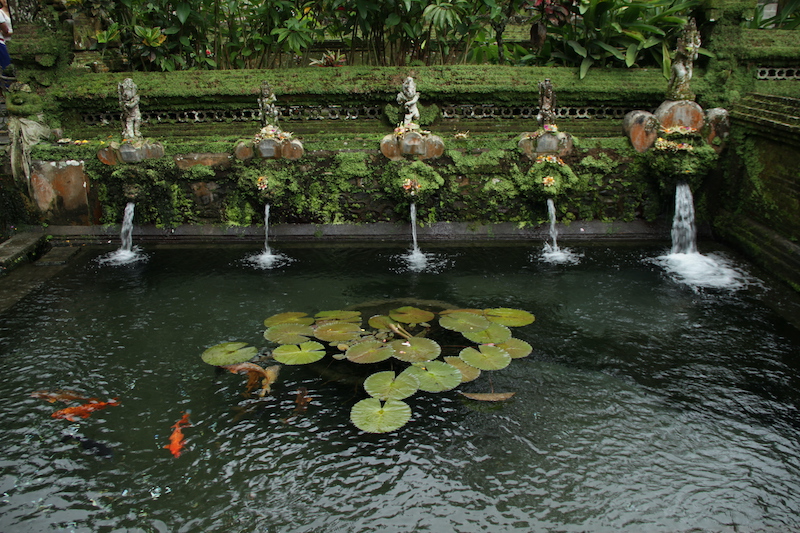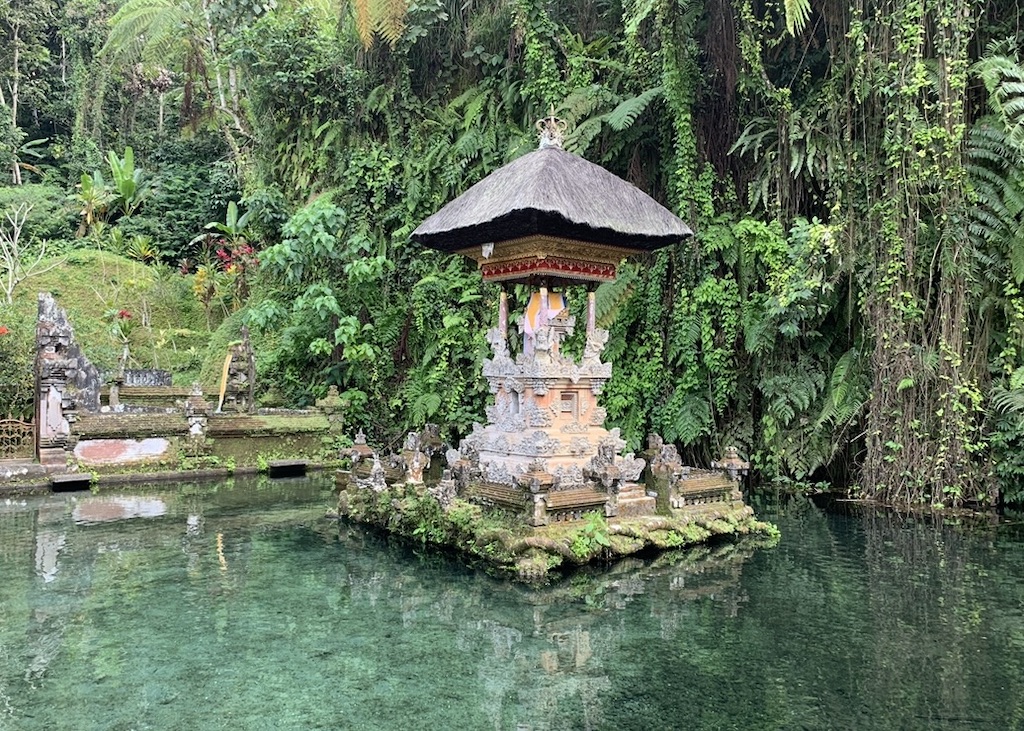In the Tampaksiring area of Gianyar district, there is a unique temple. This heritage site is one of the top tourist destinations in Bali and is well-known among the Balinese. It is definitely worth a visit when in Bali. Here’s a brief history of the temple.
The temple is closely linked to the spiritual journey of a great sage named Rsi Markandeya, who lived in the 9th century BC. Along with around 400 followers, he traveled from Taro Village to Mount Agung

During his journey with his followers, Rsi Markandeya traveled a great distance under the blazing sun, which exhausted his group. They chose to rest at this place, where they felt a sense of calm. While resting, Rsi Markandeya took time to carve and pray, asking Sang Hyang Giri Pati (God of the Soul) and Sang Hyang Ari Murti (God of Vishnu) to bless them with Tirta Amerta, a sacred water to quench their thirst and heal his weary followers

During the period of worship, water emerged from the center of the Dawa Valley, which was later named Tirta Dawa Gunung Kawi. The name ‘Gunung Kawi’ comes from the word ‘carvings,’ which were made in this place of worship to symbolize the mountains

While the Supreme Rsi was deeply immersed in worship, water—known as Tirta—miraculously emerged from the ground, eventually becoming known as Tirta Empul. This sacred spring is a confluence of water from several natural sources, and, according to religious and cultural beliefs, it is believed to possess purifying properties and the power to heal various ailments

Purification here refers to cleansing oneself of negative qualities, both externally and internally. This place of worship is closely connected to Tirta Empul Temple and Mengening Temple in Tampaksiring, both of which have significant springs. In Hindu belief, water holds deep spiritual meaning—it is seen as a divine force, a source of life, and a symbol of fertility.
 This spring supplies water to approximately 100 hectares of rice fields, covering three subaks: Delod Belumbang, Cebok, and Central Padang in the Tegalalang District. The temple is supported by the Sebatu community and the subak farming community, which includes around 200 families.
This spring supplies water to approximately 100 hectares of rice fields, covering three subaks: Delod Belumbang, Cebok, and Central Padang in the Tegalalang District. The temple is supported by the Sebatu community and the subak farming community, which includes around 200 families.

The Piodalan ceremony at this temple is held every Purnamaning Sasih Kasa (the first month of the Balinese calendar, typically in July). The temple is a place of worship dedicated to Ida Sanghyang Widhi Wasa in his manifestation as Lord Vishnu, who, in Hindu belief, serves as the God of Preservation.
Things To Do At Gunung Kawi Sebatu
At Gunung Kawi Sebatu, visitors can enjoy a variety of meaningful and cultural experiences:
- Explore the site : Take a peaceful stroll through the three main sections of the temple—Jaba Pura (outer courtyard), Jaba Tengah (central courtyard), and Jeroan (inner courtyard). You’ll find ancient architecture, intricate stone carvings, and a deep sense of history.
- Witness Cultural Ceremonies : If you’re lucky to visit during a religious festival or ceremony, you can witness traditional Balinese rituals, where locals offer prayers and make offerings, creating an unforgettable spiritual atmosphere.
- Discover the Mythology : Learn about the captivating legend of King Mayadenawa and Batara Indra, a story that adds layers of meaning to the temple and its sacred waters.
- Relax and Reflect : With its serene environment, lush greenery, and tranquil atmosphere, Tirta Empul is the perfect place to relax, meditate, or simply enjoy the peaceful surroundings.
- Shop for merchandise : Many small art shop that sell beautiful merchandise around the site road.
Some caution when entering the temple
If general tourists wish to enter the temple area, there are several rules they must be aware of and follow. This is because the Gunung Kawi Sebatu temple’s primary function is not as a tourist site, but as a place of worship.
- Just like in other places of worship, there are sacred objects in the temple that should not be touched or handled carelessly. Never touch any buildings, items, or objects in the temple without permission from the temple’s caretaker or your guide. Some items, like stones on an altar, may seem ordinary, but to the locals, they are considered very sacred. Avoid touching them, and never sit on them.
- It’s also important to refrain from using foul or disrespectful language in the temple, as it is a sacred space.
- When entering the temple, travelers must wear appropriate clothing. This means covering areas that should remain private, such as the chest, hips, thighs, and similar parts of the body.
- Women are not allowed to enter the temple or sacred areas within the temple grounds during menstruation. This rule is important for maintaining the temple’s sanctity and ensuring personal safety.
- It is recommended to have someone accompany you in the temple, or you can hire a local guide to provide accurate information about the temple. Be sure to ask about their rates and agree on the price beforehand.
Entrance Fee
The entrance fee to Gunung Kawi SEbatu site is IDR 30.000 for adults and IDR 15.000 for children. The site is open for tourist and traveler from 08:00 AM until 18:00 PM. the exception for prayers is allowed for 24 hours to enter the temple. Sarongs to wear to the temple is borrowed for free including ticket purchases.
That is the point and information to visit Gunung Kawi Tampaksiring. Below are more heritage place around Gianyar that interesting to visit.
Gunung Kawi Sebatu on map :
Goa Gajah, Yeh Pulu, Tirta Empul, Gunung Kawi Tampaksiring, Pura Mengening, Goa Garba, Candi Tebing Tegallinggah.
 This spring supplies water to approximately 100 hectares of rice fields, covering three subaks: Delod Belumbang, Cebok, and Central Padang in the Tegalalang District. The temple is supported by the Sebatu community and the subak farming community, which includes around 200 families.
This spring supplies water to approximately 100 hectares of rice fields, covering three subaks: Delod Belumbang, Cebok, and Central Padang in the Tegalalang District. The temple is supported by the Sebatu community and the subak farming community, which includes around 200 families.



